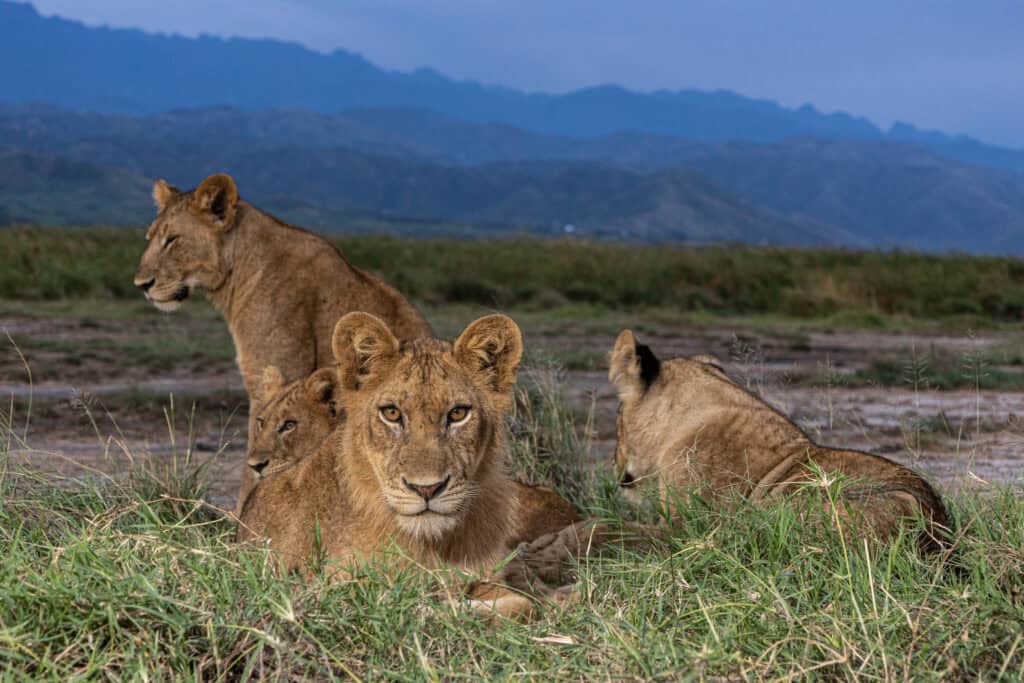Each leopard can be identified by their own unique roar, the first large-scale study of its kind has found.
Using a combination of camera traps and recordings, the research team was able to identify the vocalizations of individual leopards with 93.1 percent accuracy, a press release from University of Exeter said.
“Discovering that leopards have unique roars is an important but fundamentally quite basic finding that shows how little we know about leopards, and large carnivores in general,” said Jonathan Growcott, lead author of the study and a University of Exeter Ph.D. student, in the press release. “We hope it will allow leopards to become the focus of more acoustically complex science such as population density studies and open the door to more work on how large carnivores use vocalizations as a tool.”
Leopards are listed by the IUCN Red List of Threatened Species as “vulnerable” to extinction, mostly due to habitat loss and conflict with humans.
Due to leopards being solitary, nocturnal and occupying large expanses of terrain, scientists have had a difficult time gathering reliable data to help with reversing population declines.
A scant amount of research has been done regarding the “sawing roar” of a leopard — a low-frequency, repeated pattern used mostly for territorial defense and to attract mates that is often able to be heard at distances of more than a kilometer away.
By using bioacoustics to study leopards — a technique more often used to monitor marine species and birds — researchers can track much bigger areas.
This could allow for more complex studies like population estimates, which are a key metric for aiding conservationists and policymakers in their understanding of landscape management and the mitigation of human-wildlife conflicts.
“Conservation requires accurate information about species occupancy, populations and behaviour. However, gathering these data for elusive, solitary species, such as leopards (Panthera pardus), is often challenging. Utilizing novel technologies that augment data collection by exploiting different species’ traits could enable monitoring at larger spatiotemporal scales,” the authors wrote in the study.
The study was conducted across 450 square kilometers in Tanzania’s Nyerere National Park, where the team attached 50 camera pairs to trees alongside trails and roads. They then placed microphones beside each camera to enable them to identify individual leopards from the camera, then extract the sound of their roars from the accompanying audio.
A modeling system was used to analyze the temporal patterns of the big cats’ roars. What the researchers discovered was that not only was individual identification possible, but an overall accuracy of more than 93 percent could be achieved.
The findings, “The secret acoustic world of leopards: A paired camera trap and bioacoustics survey facilitates the individual identification of leopards via their roars,” were published in Remote Sensing in Ecology and Conservation.
The study showed that a wider array of species traits can be captured with the use of multiple technologies to record complementary data, rather than using a single form of technology alone.
“Importantly, our success in using a combination of different types of technology could hopefully lead others to think about how to integrate different types of technology into their research, as the rich data this provides could really push science ahead and help us understand ecosystems and landscapes in a much more holistic way,” Growcott said in the press release.
Subscribe to get exclusive updates in our daily newsletter!
This article by Cristen Hemingway Jaynes was first published by EcoWatch on 3 January 2025. Lead Image: A leopard in the Nyerere National Park, Tanzania. Dr. Charlotte Searle.
What you can do
Wildlife continues to face threats from overexploitation in the form of poaching and illegal trade in animal products, as well as a rapidly changing climate.
Due to existing conditions, 70% of all animal and plant species are at risk of extinction by 2050.
Help to save wildlife by donating as little as $1 – It only takes a minute.







Leave a Reply